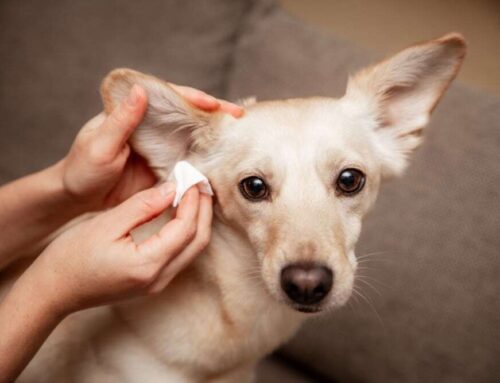Our Animal Medical Hospital of Naples team is committed to educating pet parents about the deadly dangers of xylitol, how to protect your pet, and the treatment. Chances are, you are familiar with spotting low-sugar and low-carbohydrate products on the shelves where you shop for supplements, diets, and dental hygiene products. Xylitol, which is found in many everyday commercial products as a sugar alternative, is made from the combination of sugar molecules and alcohol molecules, and boasts 40% fewer calories than regular sugar. However, despite the benefits for humans, xylitol is poisonous to your pet. Allow us to give you the 411 on why xylitol means 911 if your pilfering pet finds one of your xylitol products, and what to do should they innocently ingest the item.
What is xylitol toxicity in pets?
Xylitol is metabolized differently in humans than pets. In humans, xylitol is metabolized similarly to sugar. In pets, xylitol is quickly absorbed in the gastrointestinal tract and metabolized by the liver, at which point the pancreas overly responds and releases an excess of insulin. Pets, especially dogs, may become severely hypoglycemic 30 minutes after ingesting xylitol, although the toxicity level varies—for example, in a small dog, one stick of sugarless gum can be deadly. Veterinary scientists continue to research why xylitol poisoning puts pets at risk of liver failure.
What foods contain xylitol?
Xylitol is found as a sugar alcohol in many fruits and vegetables (i.e., berries, plums, lettuce, mushrooms, corn). Commercially, xylitol initially rose in popularity after a sugar shortage in World War II, and gained traction again in the 1970s, when society learned of sugar substitutes’ many benefits. For diabetic people, xylitol is an attractive sugar alternative because of its low glycemic index (GI). For weight-conscious people, xylitol is beneficial as a low-calorie sweetener in low-carbohydrate diet plans. In human dentistry, xylitol is used in dental hygiene products because it reduces bacteria-causing plaque. Today, you can see xylitol listed as an ingredient on the labels of many items, including sugar-free gum, mints, candy, peanut butter, ketchup, toothpaste, lip balms, deodorants, and vitamin supplements.
What are xylitol toxicity signs in pets?
Not all pets will experience an initial hypoglycemic episode after ingesting xylitol, and liver failure signs may not appear for 8 to 12 hours after ingestion. Other signs may include:
- Vomiting or diarrhea
- Weakness, disorientation, or lethargy
- Tremors, seizure, or coma
- Yellowing of the skin
- Clotting inability, or internal hemorrhaging
How is xylitol toxicity in pets diagnosed?
Regardless of whether your pet shows xylitol poisoning signs immediately after you suspect they ate any amount, you must immediately notify your veterinarian. Contact Animal Medical Hospital of Naples or Animal Poison Control after any ingestion, to determine the next steps. When you contact a veterinary professional, provide them with your pet’s breed, age, weight, xylitol amount, and the time you believe your pet ingested the product containing xylitol. Also, having the xylitol-containing product package on hand to read the ingredients and concentrations will be extremely helpful for the veterinarian.
How is xylitol toxicity treated in pets?

Dogs who receive immediate attention after ingesting xylitol will usually recover and resist life-threatening risks. Most veterinarians induce vomiting to treat pets who recently ingested xylitol. Never induce vomiting in your pet without medical direction or veterinary supervision.
If your pet ingests xylitol and you are able to take them to the hospital, your veterinarian may call for a baseline chemistry panel to evaluate your pet’s liver values, blood sugar, and electrolytes. If your pet ingests more than 0.1g/kg, your veterinarian will likely require your pet to be hospitalized, to administer intravenous fluids while their blood sugar is monitored, until they are stabilized. If your pet has ingested more than 0.5 g/kg xylitol, your veterinarian may monitor their liver values every 24 to 72 hours, and administer sugar supplementation and liver protectant medications, to protect them from hypoglycemia and serious liver damage.
Prevention is key with xylitol toxicity in pets. Keep any products containing xylitol far away from your pet’s curious paws, and consistently check labels to be aware of which products contain xylitol.
At Animal Medical Hospital of Naples, we are always ready to take your calls about any of your concerns, including pet toxicities. If you suspect your pet has ingested any amount of xylitol, contact our team immediately.







Leave A Comment